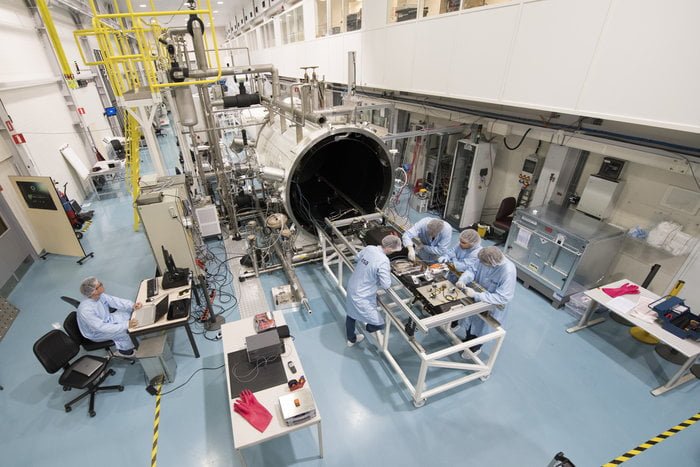Elon Musk‘s ‘Hyperloop’ challenge is being attempted by teams around the world, and Dutch students have successfully subjected their hyperloop motor to near-vacuum conditions during testing.
The Delft Hyperloop team at Delft University of Technology is responsible for this particular hyperloop motor, and the team is one of 20 finalists that were selected to compete in the SpaceX Hyperloop Pod Competition on July 22.
The team of students visited the European Space Agency’s test center located in Noordwijk, the Netherlands, in order to see how the electric hyperloop motor, battery, sensors, and brakes managed to perform while running in a vacuum.
The hyperloop motor and accompanying accessories was put into the Space Simulator chamber to be operated for around a half an hour, and successfully stood up to the task.
“TU Delft has a long tradition of entering such engineering challenges,” says team member Rico Hageman. “We’d already subjected individual elements to vacuum testing but the large size of this chamber lets us run everything at once.”
“In particular there are concerns about the possibility of electrical arcing at low pressure from our high voltage differential.
“We also want to monitor the temperature of the motor controllers as they run, as well as the performance of the carbon fibre pressure housing around our lithium polymer batteries, which are very high-density batteries but not qualified to work at low pressure.”
The Hyperloop motor is intended to be a key part of the Hyperloop itself, which is a proposed method of high-speed transportations in tubes that are close to a vacuum. With 99.9% of air removed, the vehicles within the tube could potentially reach speeds over 1000 km/h – massively increasing the speed of transportation, which is a major goal of Musk and SpaceX.
The challenge this year is to run a pod powered by a hyperloop motor at the maximum possible speed through a 1.2-km low-pressure tunnel next to the SpaceX headquarters in Hawthorne, California – while also managing to come to a stop at the end. Reaching those speeds is a task in and of itself, but stopping on a dime may prove a challenge for many teams as well.
“Everything started from a blank sheet of paper, so it’s been an exciting – and busy – time for us all,” adds chief engineer Vlad Petrescu. “We made a lot of tests of components and systems, and have iterated time and time again. In fact we’ll be returning in a few weeks to test our updated version of the system.
“Everything we ended up with has either been made by us, or else sponsored either directly or in kind – like the opportunity to test here at ESTEC. So during the challenge ESA will be one of the logos on our pod.”
When the actual operational versiones of the Hyperloop come to light, the pods will actually be passive in nature and will be propelled by the tubes themselves using magnetic induction -the technology that we also see with rapidly accelerating roller coasters. Coasters don’t reach a speed of 1000 km/hr, however, so the hyperloop motor testing is operating on a whole different level.
It remains to be seen whether this team of Dutch students can take home the prize, but it certainly seems as if their Hyperloop motor is performing admirably in testing. Whether that will translate well to the actual testing remains to be seen, but with a number of other finalists there will certainly be some stiff competition.





